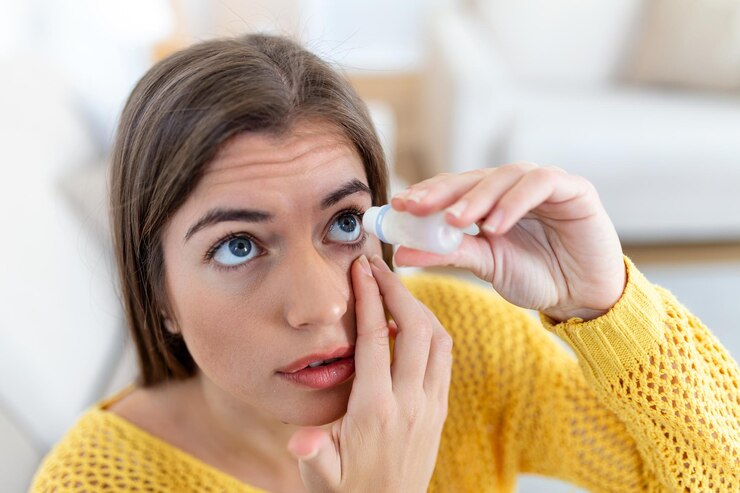Glaucoma Risk Factors: How Hormones and Genetics Impact Eye Health.
Glaucoma is a complex eye condition, often linked with increased pressure in the eye, which can lead to optic nerve damage and, if untreated, vision loss. As an age-related eye disease, it is a leading cause of blindness worldwide. However, not everyone shares the same level of risk. Factors such as genetics and hormonal changes play pivotal roles in one’s susceptibility to developing glaucoma. This article explores how these elements affect eye health and what can be done to manage the risk.
Understanding Glaucoma
Before delving into the specifics of risk factors, it is essential to understand what glaucoma entails. Often referred to as the “silent thief of sight” because it can progress without noticeable symptoms, glaucoma primarily affects the optic nerve, which is crucial for vision. There are several types of glaucoma, with the most common being open-angle glaucoma, which develops slowly over time.
Genetic Factors in Glaucoma
Genetics play a significant role in determining who might develop glaucoma. While anyone can develop the disease, having a family history significantly increases risk. If a parent or grandparent was diagnosed with glaucoma, you are more likely to develop it too.
1. Family History and Ethnicity
Some populations are more vulnerable to glaucoma than others due to genetic predispositions. For instance, African Americans are more likely to develop glaucoma and experience vision loss from it at an earlier age compared to Caucasians. Similarly, individuals of Asian descent have a higher propensity for angle-closure glaucoma. Understanding your family’s eye health history and discussing it with your healthcare provider can be an important step in early detection and management.
2. Genetic Mutations
Recent studies have identified specific genetic mutations associated with glaucoma. Discovering these mutations can assist in diagnoses and influence how ophthalmologists approach treatment. While genetic testing for glaucoma isn’t widespread, it may become more common as researchers continue to identify these specific gene markers.
Hormonal Influences on Eye Health
Hormones have more to do with our overall health than many realize, impacting everything from mood to metabolism, and yes, even our eyesight. Changes in hormone levels can influence glaucoma risk in both men and women.
1. The Role of Estrogen
Research has shown that estrogen may have a protective effect against glaucoma. This could explain why premenopausal women tend to have a lower risk than their male counterparts or postmenopausal women. However, this protection decreases with menopause, and consequently, the risk of glaucoma increases for women as they age.
Hormone replacement therapy (HRT) has been discussed in terms of glaucoma prevention, yet the results are mixed. While some studies suggest HRT may lower ocular pressure and thus the risk of glaucoma, others do not support comprehensive mitigation benefits. More research is needed to clarify the relationship between hormone therapy and glaucoma risk.
2. Thyroid Hormones
Hyperthyroidism has also been linked to increased intraocular pressure, subsequently raising the risk of developing glaucoma. Patients with thyroid issues should closely monitor their eye health and consult an ophthalmologist regularly to manage potential risks.
Managing Glaucoma Risk
Managing the risk of glaucoma involves a combination of lifestyle changes, regular eye examinations, and potential medical treatments.
1. Regular Eye Exams
Given the silent nature of glaucoma, regular screenings are paramount, especially for those within high-risk groups. Comprehensive eye exams can detect elevated intraocular pressure and optic nerve damage before noticeable symptoms occur. Early detection can preserve vision and prevent major damage.
2. Lifestyle and Environmental Adjustments
Adopting a healthy lifestyle can positively affect eye health. Consuming a balanced diet rich in antioxidants, maintaining a healthy weight, avoiding smoking, and protecting eyes from UV light are all recommended. Regular exercise also contributes to lowering intraocular pressure.
3. Medical Interventions
When lifestyle changes aren’t sufficient, medical intervention may be necessary. Medications such as eye drops are commonly prescribed to reduce eye pressure. For those considering medication, such as those looking to buy Alphagan P online , it’s vital to consult with a healthcare provider to ensure it’s appropriate. Alphagan P, a common treatment for glaucoma, helps in lowering intraocular pressure, reducing the risk of optic nerve damage.
4. Surgical Options
In some cases, surgery may be required to relieve intraocular pressure. Options include laser surgery or more traditional surgical procedures, depending on the case’s specifics.
The Future of Glaucoma Research
As science forges forward, future developments in genetic research may lead to advanced screening methods that can identify those at risk well before symptoms emerge. Genetic therapies or personalized medicine may also become viable options for glaucoma treatment.
Moreover, the relationship between hormones and eye health is still being unraveled. As understanding deepens, there might be new avenues for preventive measures or treatments tailored to better balance hormonal effects on intraocular pressure.
In summary, while glaucoma poses significant challenges, understanding the impact of genetic and hormonal factors is crucial in managing risk. By staying informed and proactive about eye health, individuals can take critical steps in safeguarding their vision. Whether considering buying Alphagan P online or exploring natural preventive measures, the journey to eye health is deeply personal and ever-evolving. Remember, the earlier you act, the better your chances of preserving your sight.














Post Comment